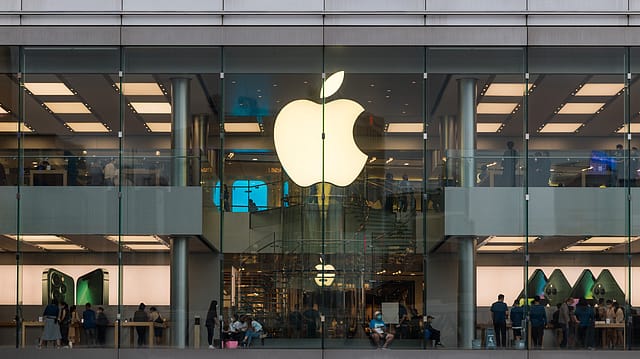Customers to face longer wait times for iPhone 14 Pro: Apple
ADVERTISEMENT

Apple says customers will experience longer wait times to receive their new products as the tech giant expects lower iPhone 14 Pro and iPhone 14 Pro Max shipments than it previously anticipated.
This comes as Covid-19 restrictions have temporarily impacted the primary iPhone 14 Pro and iPhone 14 Pro Max assembly facility located in Zhengzhou, China. The facility is currently operating at significantly reduced capacity, according to Apple.
"As we have done throughout the Covid-19 pandemic, we are prioritising the health and safety of the workers in our supply chain," the iPhone maker says in a statement.
"We are working closely with our supplier to return to normal production levels while ensuring the health and safety of every worker," Apple says, adding it continues to see strong demand for iPhone 14 Pro and iPhone 14 Pro Max models.
The development comes weeks after Apple chief executive Tim Cook said the iPhone maker's record revenue in the September quarter was aided by the company's strong double-digit growth in emerging markets like India.
"We set September quarter records in the vast majority of markets we track, and our performance was particularly impressive in several large emerging markets, with India setting a new all-time revenue record and Thailand, Vietnam, Indonesia, and Mexico more than doubling year over year," said Apple chief financial officer Luca Maestri.
December 2025
The annual Fortune 500 India list, the definitive compendium of corporate performance, is out. This year, the cumulative revenue of the Fortune 500 India companies has breached $2 trillion for the first time. Plus, find out which are the Best B-schools in India.
In the July-September quarter, Apple led India's smartphone shipments in the premium segment, followed by Samsung and OnePlus. The iPhone maker reached its highest ever shipment share in India and iPhone 13 became the top smartphone model in Q3 2022, a first for Apple in India, according to Counterpoint Research.
Apple reached its highest ever share of 5% in India's smartphone market during the quarter driven by a strong channel push ahead of the festive season.
Meanwhile, India's smartphone shipments declined 11% year-on-year to 45 million units in the July-September quarter, dragged down by the high base last year and weak demand in the entry-tier and budget segments.
"After the 5G network rollout, consumers are quite keen on purchasing 5G smartphones, especially the upgrading users. In Q3 2022, 5G smartphones registered 31% YoY growth and contributed to 32% of the total shipments," says Counterpoint research analyst Shilpi Jain, adding that the sub ₹10,000 price band continues to be under pressure due to lower consumer demand and contributed to 27% of the total shipments, down from 31% a year ago.
